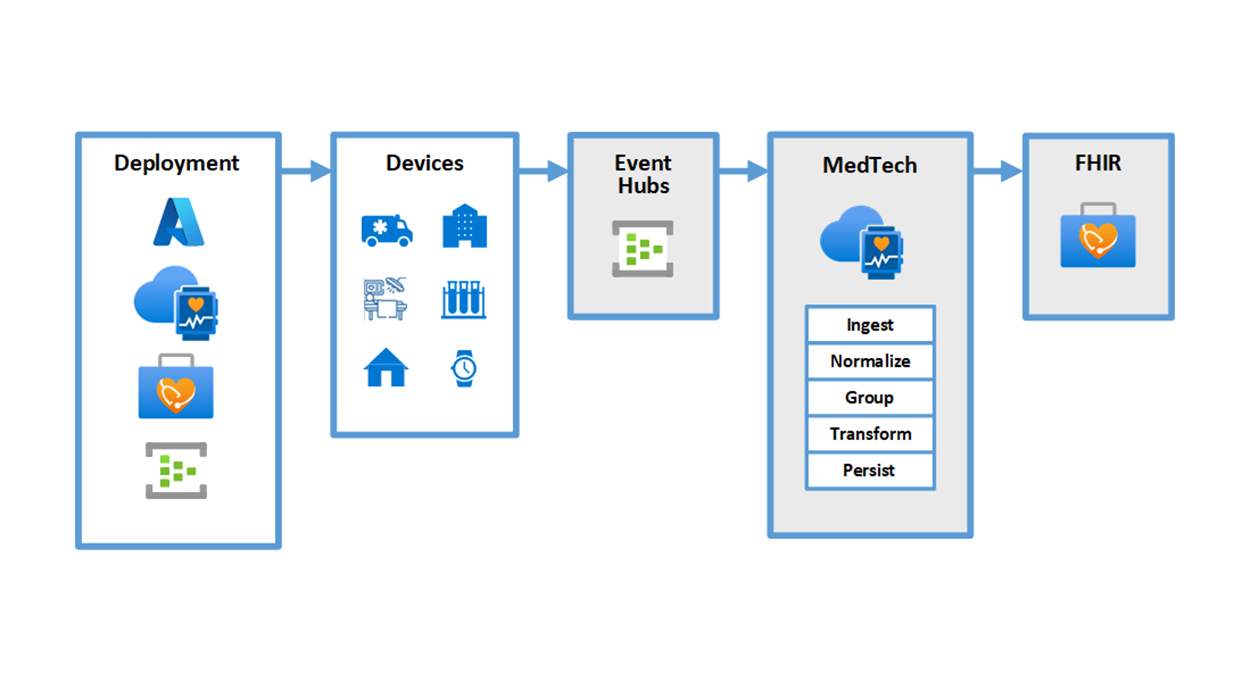Introduction to the MedTech service
Microsoft enables the ingestion of IoT device data for various health use cases in the cloud, spanning analytics, use in applications, wellness trend indication, and more. The MedTech service helps you ingest IoT data from devices, convert it to FHIR® resources, and store it in a secure environment that's highly scalable. The MedTech service is a Platform as a Service (PaaS) within the Azure Health Data Services. This helps with the challenge of gaining relevant insights from device data coming in from multiple and diverse sources. No matter the device or structure, the MedTech service normalizes that device data into a common format, allowing the end user to then easily capture trends, run analytics, and build Artificial Intelligence (AI) models. You can query and view the information for real-world action. In the enterprise healthcare setting, the MedTech service is used in the context of remote patient monitoring, virtual health, and clinical trials.
The MedTech service supports the following features:
Secure - The MedTech service delivers your device data into FHIR service, ensuring that your data has unparalleled security and advanced threat protection. The FHIR service isolates your data in a unique database per API instance and protects it with multi-region failover. In addition, the MedTech service uses Azure role-based access control (Azure RBAC) and a system-assigned managed identity for extra security and control of your MedTech service assets.
Configurable - The MedTech service can be customized and configured by using device and FHIR destination mappings to define the filtering and transformation of your data into FHIR Observations.
Scalable - The MedTech service enables you to easily modify and extend the capabilities of the MedTech service to support new device mapping template types and FHIR resources.
Integration - The MedTech service can also be integrated for ingesting device data from these wearables using our open-source projects:
Fitbit®
Apple®
Google®
How the MedTech service works
The following diagram outlines the basic elements of how the MedTech service transforms device data into standardized FHIR Observations for persistence in the FHIR service.

The MedTech service processes device data in five stages:
Ingest - The MedTech service asynchronously reads the device message from the event hub at high speed.
Normalize - After the device message has been ingested, the MedTech service uses the device mapping to streamline and convert the device data into a normalized schema format.
Group - The normalized data is then grouped by parameters to prepare it for the next stage of processing. The parameters are: device identity, measurement type, time period, and (optionally) correlation ID.
Transform - When the normalized data is grouped, it's transformed through the FHIR destination mapping and is ready to become FHIR Observations.
Persist - After the transformation is done, the newly transformed data is sent to the FHIR service and persisted as FHIR Observations.
For more information on these stages, see Overview of the MedTech service device data processing stages